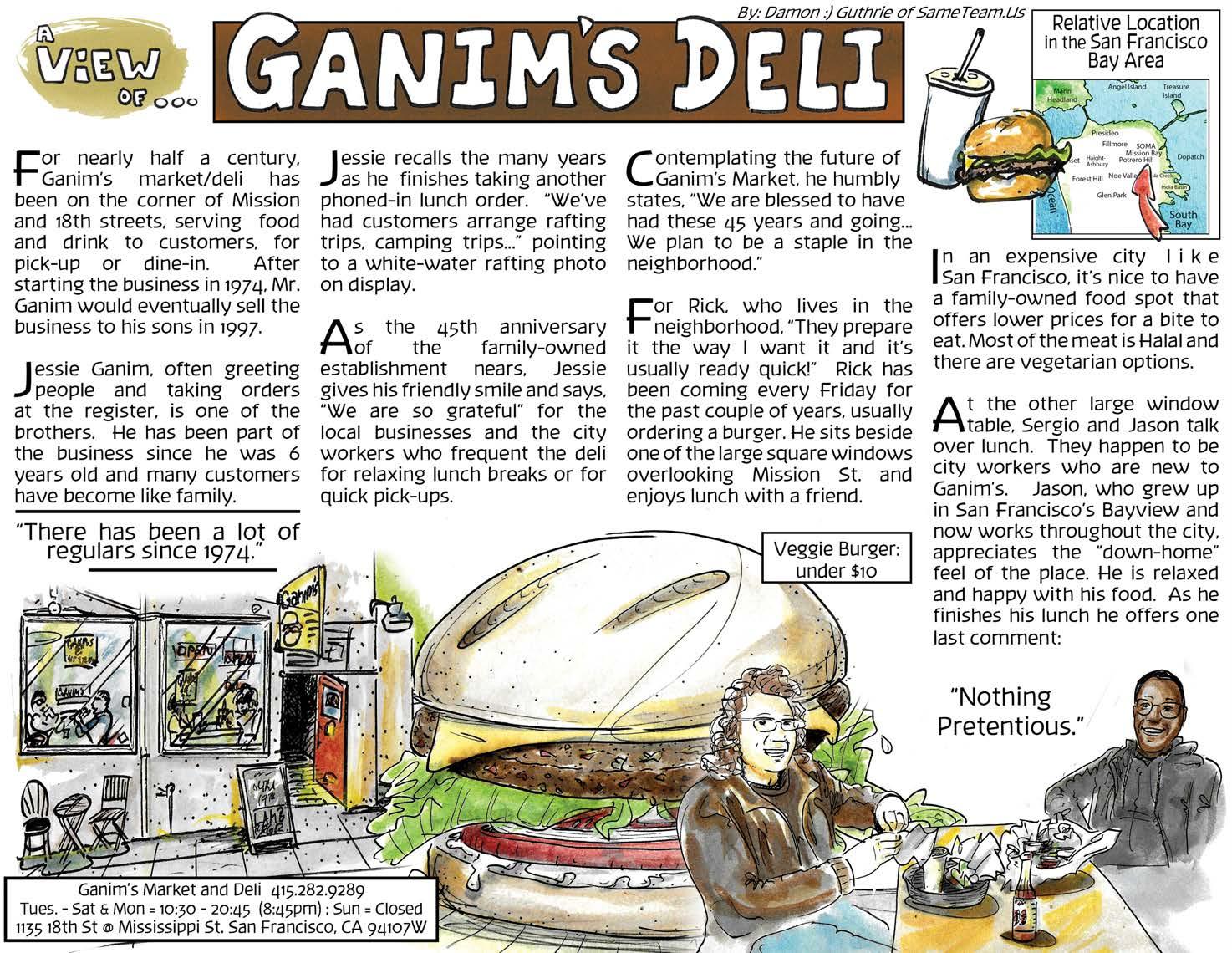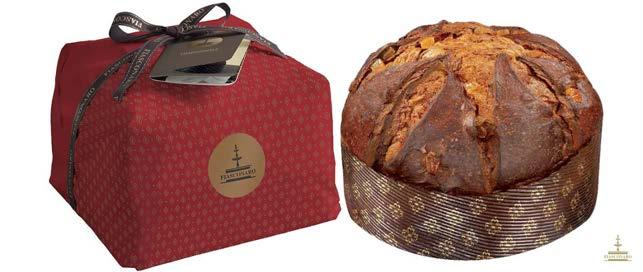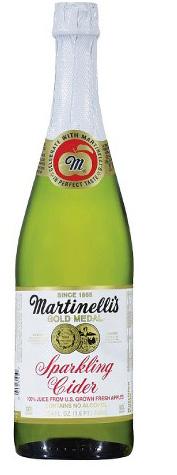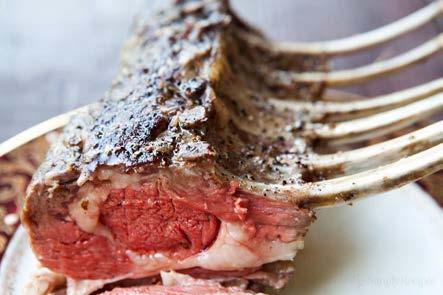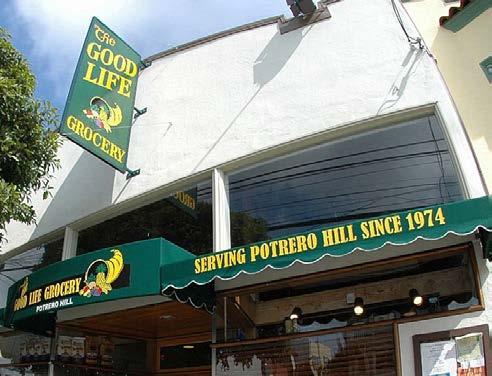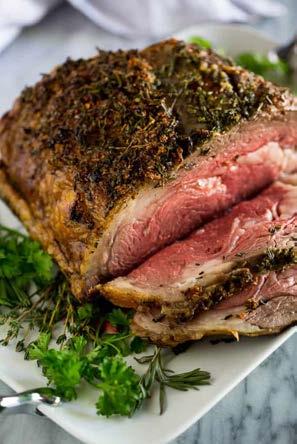
DECEMBER 2019
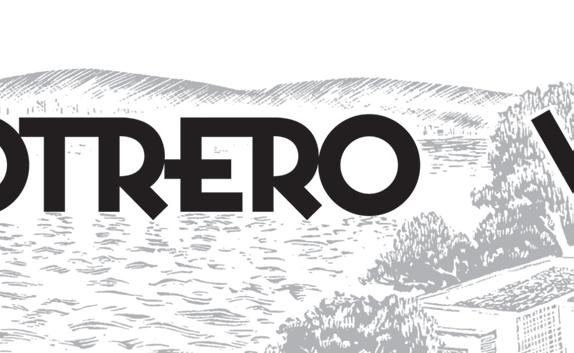



Earlier this fall, the San Francisco Board of Education unanimously denied the New School of San Francisco’s charter school re-authorization request. Launched on Potrero Hill in 2015, currently serving kindergarten through fifth graders, New School had applied to expand to the eighth grade. The Board rejected that appeal and refused to reauthorize the school’s existing kindergarten through fifth grade charter.
New School has appealed to the California Department of Education to overturn the denials. A decision is expected early next year. If the State doesn’t reverse the Board’s decision, 288 students may be forced to pursue their education elsewhere.
“We submitted our petition for re-authorization in June with two significant changes…a preference in our lottery for low-income families; and
an extension to serve grades K-8,” New School’s website states. “While our petition has always been for a K-12 school, our first charter only covered grades K-5, so this charter needed to outline the plan for the next set of grades. The District attempted to separate grades 6-8 from K-5 – though there were no clear legal grounds for doing this – and ultimately denied all of K-8, despite no legal findings and a recommendation from their staff to approve K-5.”
San Francisco Board of Education denial of charter school applications isn’t unusual. In what’s become almost routine, charter schools apply to the Board, their application is rejected, the charter appeals, and the State Board of Education overturns San Francisco’s decision. As reported by the San Francisco Examiner, four of the City’s 16 charter schools – two more will be added next year – have had
NEW SCHOOL continues on page 6
Over the past ten years California’s four large investor-owned utilities (IOUs) have been rocked by disturbances. The 2010 San Bruno natural gas line explosion was followed by more than 2,000 wildfires in the ensuing decade, sparked by IOU equipment. The 2017 Camp Fire, caused by a Pacific Gas and Electric Company (PG&E) transmission line, was the worst conflagration in state history, with 53,360 acres burned, 18,804 structures destroyed, and 86 deaths.
In October PG&E notified state regulators that a transmission tower malfunctioned near the spot where the Kincade Fire ignited in northern Sonoma County. T hat fire consumed in excess of 78,000 acres – more than double the size of San Francisco –demolished 374 structures, including 174 residences, and forced hundreds of
thousands to flee their homes.
The 2015 Aliso Canyon gas leak revealed vulnerabilities in Southern California Gas Company’s system. Southern California Edison Company’s (SCE) San Onofre nuclear facility closed in 2013; PG&E’s Diablo Canyon plant is expected to follow by 2025. This year, the one millionth solar roof system was installed in California, a fifty-fold increase since 2006. State energy and climate change policies have force-marched the IOUs towards dramatically reducing their polluting air emissions, putting intense pressure on institutions that grew-up turning large fossil fuel valves on and off.
BY BETTINA COHENTownsend Street from Third to Eighth streets – an area encompassing the Fourth Street Caltrain depot – is being significantly renovated to improve safety and transit speed, with the installation of Muni bus loading zones, protected bikeways, and an 1,000-foot-long raised sidewalk where no safe footpath had previously existed.
The Townsend Street Corridor Improvement Project began last winter after being approved by the San Francisco Municipal Transportation Agency (SFMTA) Board in 2018. Permanent transit embarkation relocations and parking changes have already been implemented in some places; temporary
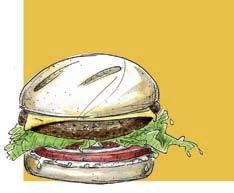
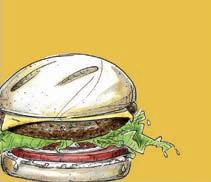
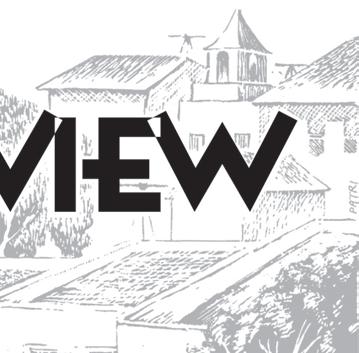
commuter pickup zone alterations necessary during the year-plus long project will remain in effect until the scheme is completed, anticipated for early 2020.
In addition to being a regional transportation hub, Townsend Street is a Vision ZeroSF high-injury corridor; a significant number of incidences resulting in severe wounds, particularly among pedestrians and bicyclists, have occurred there. The area is dense with office and living spaces, with relatively few retail businesses requiring street parking.
Arriving and departing trains generate substantial foot traffic crossing
For years Walden Development has worked to develop 901 16th Street and 1200 17th Street, known as the “Corovan” site. In 2013 the developer proposed to build housing and Kaiser Permanente medical offices at the site, an idea that was fiercely rejected by nearby residents. A subsequent plan to construct roughly 400 housing units and 25,000 square feet of retail space, which was approved by the City three years ago, has been held up by legal challenges.
Now, anxious to identify a place to relocate the Wholesale Flower Mart to make way for a massive development at Fifth and Brannon streets, Kilroy Reality, supported by the Mayor’s Office of Economic and Workforce Development (OEWD) is eyeing the Corovan site as a node to sell florae.
The deal, if it goes through, could solve multiple problems, though create
new ones for Potrero Hill. Construction costs have escalated over the past several years, significantly eroding the profitability of building even upperincome housing. Tens of millions of dollars of development impact fees would be generated by the South-ofMarket project. But OEWD has been unable to find an alternative site for the Flower Mart, failing to secure locations at the Wholesale Produce Mart and other Bayview properties. As part of its development agreement Kilroy needs to relocate the blossom businesses; if an alternative isn’t found by the end of the year rents for existing vendor spaces could skyrocket.
However, over the past decade the area around Showplace Square has morphed from being predominately a design district to becoming increasingly dense with residential complexes. As a result, the primary adjacent trans-
ENERGY continues on page 10 FLOWER

Editor,
I was saddened to read in the November View of the passing of my dear friend and real estate agent extraordinaire, Linda Clark.
I chose Linda to sell/buy two properties on Potrero Hill. At the time the Hill wasn’t a choice place to live. There were two huge water tanks on the Southside, that’ve since been taken down. When the wind blew from the south the aroma from nearby “Butchertown” had you quickly closing all the windows and doors. There was only one bus line, Number 53, that slowly creaked up the steep slopes.
No new homes were being built because the Hill was redlined. Loans were difficult or impossible to get. Nevertheless, my husband and I invested in rental property. When it was time for us to sell, we chose Linda as our agent.
I will always remember Linda’s confident expertise. Each evening she’d come to our home to discuss the transactions of the day. As a thank you for giving her the listings Linda invited us to her home, where we devoured three of the largest pizzas I’ve ever seen, of course with glasses of wine.
Anne Loskutoff Connecticut StreetI’ve come to terms with the loss of Dr. Video and The Daily Scoop, 18th Street stalwarts of yesteryear. But the way San Francisco has changed more recently reveals a shift in the City’s nature, who it’s made for and how it’s being experienced.
I lived on Vermont Street my whole life. When I became a freshman at the University of California, Santa Barbara four years ago it was easy to adapt to flat neighborhoods, where I could bike without shifting gears; free parking; and residing two blocks from the beach. Experiencing life in a place where getting around is easy made visits home feel congested by comparison.


But it wasn’t just the juxtaposition which created this feeling. The City has become increasingly crowded and dense. Formerly empty lots are now filled with modern architecture; there’s more road rage. The spaces where houseless folks had found shelter, such as on Division Street, are no longer as hospitable. I wonder how newcomers experience a municipality that used to be so diverse and surprising.
The corporations which appear to run the City are eager to be seen. Salesforce imposed a giant phallus onto our precious skyline, trumping the iconic TransAmerica building. Chase Bank has given the Golden State Warriors a new home in our tiny town and is birthing its own microcosm around the Chase Center in partnership with Kaiser Permanente, another giant, called “Thrive City.” Mission Bay which, a few years ago was a non-neighborhood of empty lots and University of California, San Francisco buildings, has boomed into a pseudo-downtown, with all the traffic, tall buildings, and pedestrians, but none of the grime or nostalgia. Transportation networking companies (TNCs) have put San Francisco into the palms of anyone who can afford their
rides hand.
San Francisco is small for a big city. Inside these 47 square miles neighborhoods fade into one another. If you blink walking in the Mission you’re in the Castro, then the Haight. Eventually, though you started ambling in Potrero Hill, you’ll find yourself passing the windmills in Golden Gate Park with blisters on your feet! Of course, a saunter across town is no casual afternoon stroll, but the ease of moving from one place to another has always been one of my favorite City characteristics. Every step here feels like home. It’s familiar, yet there’s always something new to discover. A town of infinite detail, it’s not a place which can be epitomized by a single park, bar, or brunch spot.
There are many ways to traverse this little town, but as we accrue more transportation modes the City has become increasingly difficult to move through. Additional miles of bike lanes have been created. Muni’s fleet has two types of hybrid buses, electric light rail cars, and Cable Cars. There’s vehicle-, bicycle-, scooter- and ridesharing. Yet San Francisco transit is stuck in a feedback loop: as traffic congestion intensifies, Muni runs slower, commuters choose alternative transport modes, often TNCs, more cars enter the City, traffic worsens.
We’re in an age of extreme punctuality. Instead of waiting patiently in traffic, we look up a map on our phones to see exactly how long we’ll be stuck. We get nervous when the Muni stop countdown says the bus should’ve arrived two minutes ago. TNC apps reassure users by showing tiny graphics of nearby drivers. We like to have eyes on the situation before we even get into a car. San Franciscans in a hurry crave this sense of control.
Muni riders must be alert and responsible; carry exact change or a
MOBILITY continues on page 12
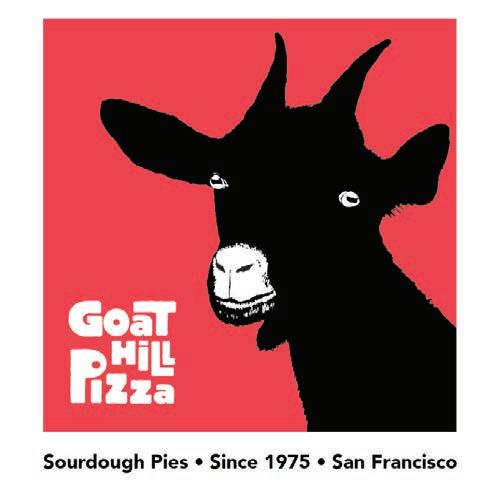

A family that’s owned land for four generations at the southern tip of San Bruno Avenue wants to build a seven-story housing development utilizing the state Density Bonus Law to gain exemption from City height limitations. Early indications are that neighborhood opposition to the project will be fierce.
San Francisco’s zoning restricts structure heights on the parcel, at 1458 San Bruno Avenue, to 40 feet; the current industrial building on the site is just 15. The Density Bonus allows developers to circumvent local limits, by increasing density by 35 percent and including affordable housing.
Under the proposed project 23 of 205 housing units – 122 studios and 83 two-bedrooms – would be reasonably priced. In exchange, the family wants to be allowed to construct two buildings, one six-stories, the other seven, leveling off at 70 feet.
The development proposal is being spearheaded by Chris Goode whose great-grandmother purchased the property. “I’m not a developer. I’ve never developed anything before,” he told neighbors at a pre-application community meeting held last month at the Potrero Neighborhood House. “But the way this lot works was not sustainable. We have to do something different.”
Reaction to the proposal was hostile. While Goode, his 89-year old mother Marilyn, and architect Bob
Baum stood alone at the front of the room, 80 neighbors, a dozen of whom spilled into the hallway, barely allowed them to speak. Opposition was instigated by users of the abutting Potrero del Sol Park Community Garden, who had distributed a yellow flyer headlined “Keep the Sol in Potrero Del Sol” in English and Spanish. While gardeners worried about shadows cast on the park, long simmering tensions in the Mission over gentrification and fury over creation of more market rate housing in a City losing middle- and working-class residents quickly boiled to the surface.
“This is a community not a monopoly board,” read one makeshift sign. “Market rate housing = death” read another. Another voiced it as “half of a skyscraper for a residential neighborhood.”
Meeting attendees pointed out that the community garden is one of San Francisco’s oldest, and the building has a long history of housing artists. Currently, 11 commercial tenants rent spaces at 1458 San Bruno Avenue, the most prominent being Tiny Telephone, a recording studio that’s been there for 22 years. A skateboard park – part of Potrero del Sol Park – and Bryant Elementary School are neighbors.
“That corner is one of the last vestiges of San Francisco,” said one attendee, Ivy Jeanne.
“It’s ridiculous to propose luxury housing next to a school where students are experiencing homelessness,” added Kristen Panti, a teacher.
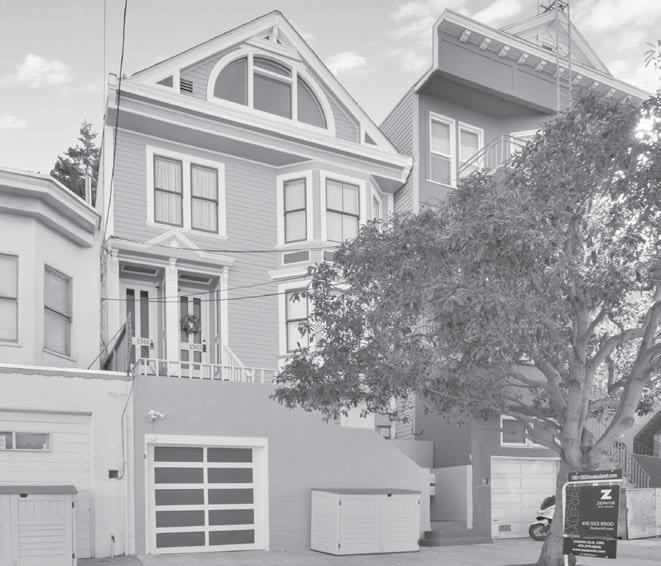
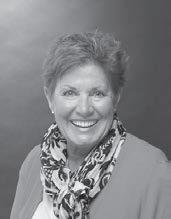
Ayesha Khan, a tenant of Goode’s at an adjacent building, said she initially hadn’t planned to speak at the meeting but felt compelled to advise him to “do something that blends so there is not this violent opposition.”
Goode countered that he’d be happy to sell the property for less than the profits he could garner by developing it, but the only interest he’s received over the past four years has come from market rate speculators. He didn’t like their proposals, so decided to create his own project. He said no affordable housing developers have stepped up; the City wasn’t interested when he offered the site for a homeless navigation center; and Recreation and Parks cancelled two meetings with him over the idea of expanding the park. “The City didn’t want it or the battle,” said Goode, indicating that municipal officials won’t talk to him until he secures approval for construction. “The City doesn’t want to get involved,” he said.
While Goode said the parcel’s future is in his hands, the land is coowned by 11 other extended family members, and he has a responsibility to those who want to get a larger return. The family cannot afford to build allaffordable housing, he explained, and banks prefer to lend him more money for a seven-story development rather than less money for four-stories that won’t generate as much income.
If the development goes through, according to Mary Beth Pudup, volunteer coordinator of the garden, “It will destroy this very precious place.
It’s not just about the light. The sun heats the soil. We will lose light and heat.” Pudup was unable to identify any other San Francisco developments utilizing the State Density Bonus Law that impacted both a public park and an open space similar to the garden.
In the preliminary project assessment (PPA) application filed with the Planning Department, Baum’s architectural design shows most of the shading would occur before noon. He said this conforms with the City’s Eastern Neighborhoods Plan and suggested a waiver wouldn’t be needed through the Density Bonus Law over that aspect.
The Density Law is intended as a tool to boost housing stock. Ella Samonsky, the City planner assigned to the project, said waivers over local zoning can be granted only when a developer demonstrates that it’s needed to increase the amount of housing. Samonsky said projects still must go through the usual channels, including a California Environmental Quality Act study and Planning Commission approval.
“The State Density Bonus program does not waive any process. So, if you were required to get any entitlements or approvals before you invoked State Density Bonus you still have to go through all the same processes,” she said.
Neighbors are also concerned about parking, and traffic congestion
SAN BRUNO AVE continues on page 11
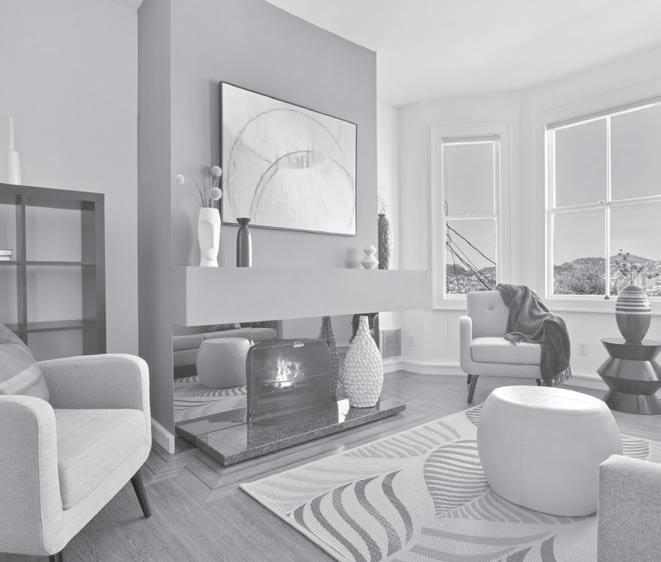


Pera, a Mediterranean restaurant, is celebrating ten years on 18th Street. Irfan Yalcin and his younger brother, Metin, have been ‘serving the Hill with love since 2009.’ To celebrate the milestone, last month the restaurant expanded from offering wine and beer to purveying an extensive array of beverages.
Yalcin recently acquired a full liquor license, enabling Pera to present cocktails. Drinks will be served from a newly installed longer, wider, bar made of repurposed redwood, with cocktail tables, barstools, a large-screen television and happy hour menu. There are plans for a wall of climbing vines to separate diners and bar customers, creating a comfortable lounge vibe that’s distinct from the spacious eggplant-
colored dining booths. The establishment’s hours will be extended to 11 p.m. to accommodate those who want a drink and light snack in a friendly neighborhood atmosphere.
Yalcin made the changes in part because he’d noticed that families who used to be regulars had moved from Potrero Hill, replaced by tech industry singles, a younger crowd. Yalcin wants to appeal to all San Franciscans, with everyone feeling welcome at Pera.
Yalcin got his first restaurant job when he was a high schooler in Ankara, Turkey, working alongside his older brother, Nurhan. At the end of his first night he was hooked. He told Nurhan that he knew what he wanted to do with his life; he’s been working in the food sector ever since.
A cannabis retailer plans to open at 667 Mississippi Street by next spring. Stay Gold is owned by Nguey Lay, Angel Davis, and Mike Hall, all of whom “have deep roots in San Francisco going back generations” according to Lay.
Walton Chang, Lay’s uncle – who for several years provided delivery services to the View – operated a printing plant at the Mississippi location when Lay was a teenager. “For years, Wally encouraged me to save enough money so that I could one day purchase the printing plant. That day finally came.”
serve and come from, we hope to hire from within the community and give people a chance to learn new skills from this new and exciting industry.”
Lay, who launched Golden Dragon Manufacturing, a cannabis cultivation company, in 2011, said that opening a dispensary is a “natural progression.”






Pera is the first restaurant Yalcin opened; he started it with a silent partner. Since launching Pera, he’s acquired the Haight Street and Mission Street Cha Cha Cha eatery. He also took over Papito’s, around the corner from Pera, in 2017.
Pera bills its cuisine as Mediterranean, but according to Yalcin it’s really Anatolian, from the plateau lands of Turkey. Yalcin himself is Kurdish, as is his wife, Ayca, who works as a hostess occasionally; they met at Pera. They live on Mariposa Street with their 2.5-year-old Aras-Leon, who Yalcin boasts will soon be attending Daniel Webster Elementary School.
Stay Gold participates in the San Francisco Office of Cannabis’ Equity Program. “The Equity Program was designed by San Francisco to help people that have been impacted by the war on drugs and now have an opportunity to start a business in a field that up until recently was illegal in the state. It is…very important because it fosters equitable participation in the cannabis industry and gives small local business like ours a chance,” said Lay. “…the Office of Cannabis…gives verified equity applicants a chance to create something special with the support of the City. Our model is based on giving back to the communities we
For many individuals living in poverty, a warm winter coat is a “luxury.” However, health experts report that just a 2° drop in body temperature can cause reduced heart rate, loss of coordination, confusion, and other health issues.
As the weather turns cold, it’s time to grab those unused coats, sweaters, & jackets from w-a-y back in the closet, and give them to those who would otherwise shiver in the cold.
Call or Text me at 415.336.0754 or Email me. I will pick up your donations at a time convenient for you. Tax receipt provided for your records.

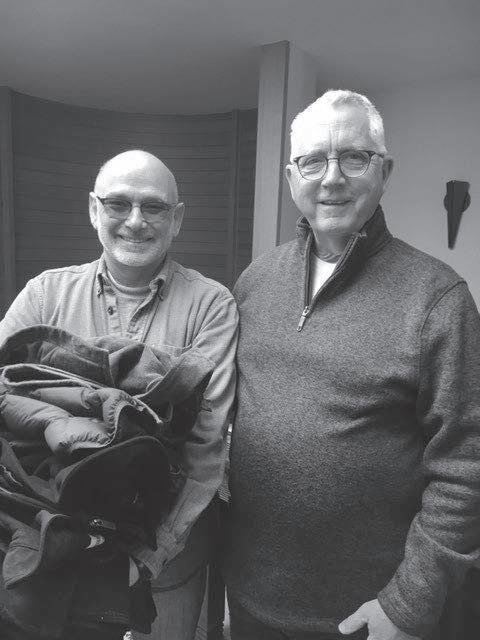
Stay Gold was eligible for Equity Program participation as a result of Hall meeting three of six criteria: household income below 80 percent of San Francisco’s 2018 average median income; been arrested for or convicted of the sale, possession, use, manufacture, or cultivation of cannabis, including as a juvenile, from 1971 to 2016; lost housing in San Francisco after 1995 through eviction, foreclosure or subsidy cancellation; attended school in the San Francisco Unified School District for five years from 1971 to 2016; or lived in a San Francisco census tract for five years from 1971 to 2016 where at least 17 percent of the households had incomes at or below the federal poverty level.
As an Equity Program participant Stay Gold didn’t have to pay the City’s $5,000 permit application fee. In contrast, Dutchman’s Flat, located on Third Street, paid for its permit through the Department of Public Health.
“I think Dutchman’s Flat has done a great job to help destigmatize cannabis with their presence and great businesses practices in the neighborhood,” said Lay.
Stay Gold plans to promote the
CANNABIS continues on page 11
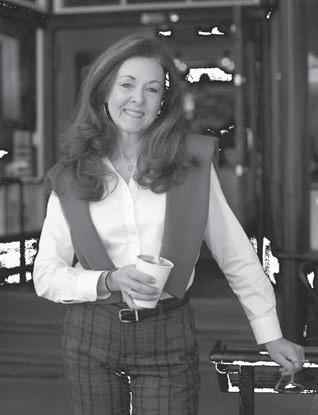

Starr King Open Space, a neighborhood park located at 1215 Carolina Street with sweeping vistas, has a new addition to the view. The majestic sights from the public space haven’t been altered due to real estate development, but by the addition of a new mural, intended to reflect and extend the beauty of the natural environment around it.
The mural, entitled “Potrero Hill Skies,” was created by Art Chemist Studios, a Los Angeles-based painting company made up of a collective of artists: Jaime Guerrero, Daniel Toledo, and Joey Stupor.
“It’s the first large mural we have done in the Bay Area,” said Guerrero. “The studio is located in the heart of downtown Los Angeles, in the historic district. We operate out of a large loft where most of the designs and meetings take place. We wanted to branch out and spread our influence throughout the country. North Cal has always had amazing artwork and inspirational scenery. It’s been a pleasure working in SF.”
The fresco is painted on the side of a private home that abuts the public park. The residence’s owner, interior designer Janine Hunn, wanted to enhance the beauty of the open space, of which she’s an ardent fan.
“A few months ago, [my husband and I] decided to commission a mural on the side of our new home. I wanted to create a mural that blends into the landscape and reflects the beauty of the
park and the wildlife that share it. I also wanted it to depict my favorite resident of the park, a red-tailed hawk, as well as the coyotes that are occasional visitors to the park,” Hunn said.
“Janine approached us with a broad nature-themed direction,” Guerrero remembered. “We then
made a revision that merged a bit of the old ones and the seamless integration of the skyline. She made it clear that all the animals that visit her home should be featured. The red-tailed hawk added a grand presence to the mural, the coyotes a bit of danger, and the skunk some playfulness.”
Twin Peaks, the Golden Gate Bridge and sunsets.
The Art Chemist collective worked to create art that’d be harmonious with the natural beauty present. “We wanted to keep the art piece open, but grounded at the same time,” Guerrero said. “With this in mind we adopted a low satura-
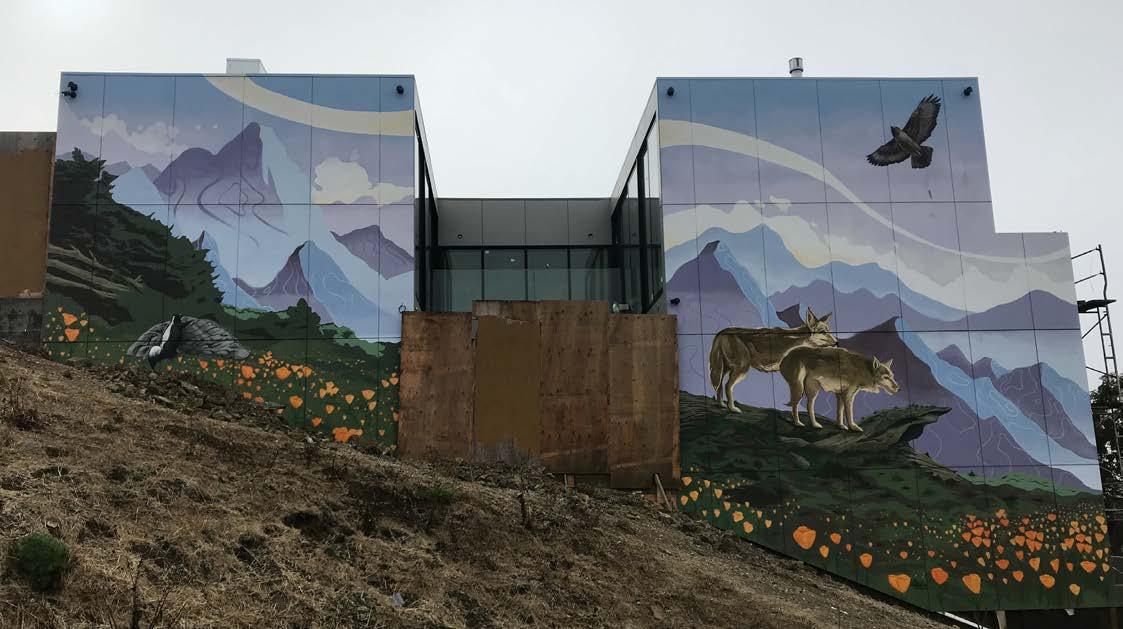
proceeded to design based on all our personal aesthetics. The first iteration established some directions that excited us, but ultimately didn’t fit her vision. The idea of merging the landscape of Potrero Hill on to the wall was hers. After this new direction we
Hunn is pleased with the piece. “I interviewed nine mural artists out of an application pool of about 35. Jaime and his crew were the front runners. They took my vision of creating a mural that looks like an extension of the park, blending natural plants and animals into a graphical landscape.”
“I think the reaction to the mural is positive and people really enjoy seeing more publicly accessible art in the community,” reported Matt Nessier, Starr King Open Space Preservation Board president.
Hunn’s first priority was to accentuate the beauty of the park, which is popular with Hill residents, kids and dogs, and offers stunning views of
tion color pallet with some cool Pastel colors to mimic the hazy mountains that you see in the morning over the hill. At the same time, we punched up the saturation of the foreground with some bright orange California poppies rhythmically scattered over the horizon. The designed was partly founded on Joey Stupor’s sketch of mountains. We added a tree growing at an angle similar to the one behind the home to further blend in the surroundings of the area on to the mural. Additionally, we gave it some designed elements like a wave form depicting motion from the hawks flight leading the eye from one building to the other.”
Thank you. Grazie. Gracias. 谢谢. Merci. Thank you. Grazie. Gracias.
Thank you. Grazie. Gracias. 谢谢. Merci. Thank you. Grazie. Gracias.
Thank you. Grazie. Gracias. 谢谢. Merci. Thank you. Grazie. Gracias. 谢谢. Merci. Thank you. Grazie. Gracias. 谢谢
Thank you. Grazie. Gracias. 谢谢. Merci. Thank you. Grazie. Gracias. 谢谢. Merci.





Thank you. Grazie. Gracias. 谢谢. Merci. Thank you. Grazie. Gracias. 谢谢. Merci. Thank
Thank you. Grazie. Gracias. 谢谢. Merci. Thank you. Grazie. Gracias. 谢谢. Merci. Thank you.
Thank you. Grazie. Gracias. 谢谢. Merci. Thank you. Grazie. Gracias. 谢谢. Merci. Thank you. Grazie. Grazie. Gracias. . Merci. Thank you. Grazie. Gracias. 谢谢. Merci. Thank you. Grazie. Gracias. 谢谢. Merci. Thank you. Grazie. Gracias.
Thank you. Grazie. Gracias. . Merci. Thank you. Grazie. Gracias. 谢谢. Merci. Thank you. Grazie. Gracias.


Thank you. Grazie. Gracias. . Merci. Thank you. Grazie. Gracias. 谢谢. Merci. Thank you. Grazie. Gracias. 谢谢
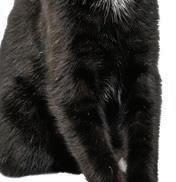


Thank you. Grazie. Gracias. . Merci. Thank you. Grazie. Gracias. 谢谢. Merci. Thank you. Grazie. Gracias. 谢谢. Merci.

Claudia Siegel, CRS Realtor® 415.816.2811 claudia.siegel@compass.com sfpotrerohillrealtor.com @claudiasiegelsf
DRE

their applications repudiated by San Francisco only to have the State reverse the outcome. New School’s initial 2015 charter application was refused by San Francisco before being unanimously approved by the 10-member State Board.
Charter schools have long been controversial. In 2000, the passage of Proposition 39 required California school districts to make facilities available to all public school students, whether they’re enrolled in charter or traditional public schools. To avoid having to build new campuses, school districts typically co-locate charter schools with non-charters. This arrangement can draw the ire of traditional public schools, which may have to make space on a site they previously called their own.
New School shares its 655 De Haro Street campus with San Francisco International High School. New School’s Head of School Emily Bobel Kilduff described the two institutions’ relationship as being generally positive while noting that space is tight.
“Co-locating with anyone is challenging and the differences in our student populations have enhanced those challenges,” Tara Hobson, SF International High School principal, said.
SFUSD reported that in the 201920 academic year 53,855 students are enrolled in traditional public schools. According to the San Francisco Examiner another 6,700 students attend charter schools. A 2018 SFUSD demographic study indicates that more than twice that many San Francisco children go to private school; likely in excess of 13,000 students.
To their proponents, charters offer a tuition-free alternative to costly private schools, the recourse for parents nationwide dissatisfied with educational opportunities offered at traditional public schools. Charter schools are promoted as stimulating a market-like competition of ideas and
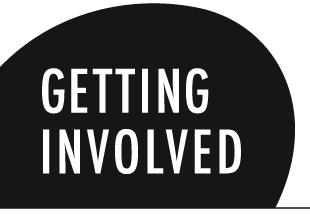
Green Benefit District
educational models that spur greater academic achievement and increase the caliber of education.
Opponents portray charter school operators as being insufficientlyregulated often out-of-town profiteers that divest school districts of resources and siphon off high-achieving students, leaving traditional public schools in perilous financial straits and at risk of decreased average standardized test scores.
SFUSD School Board members are openly hostile to charter schools. “It’s hard enough to manage schools that you technically don’t manage,” Alison Collins, elected to the Board in 2018, was quoted by the San Francisco Examiner. “When their [charters] authorization is in Sacramento, it’s impossible.”
“SF is not for SALE! Don’t let an unapproved KIPP school displace immigrants and students of color,” a website of San Francisco Families Union, a group Collins co-founded, proclaims.
“They [charters] are not reaching the hardest to serve students,” Board member Mark Sanchez, said in a 2018 San Francisco Public Press article. “...state laws around charters really disadvantage local districts.”
Four out of 11 San Francisco Board of Supervisor members are former School Board members. District 10 Supervisor Shamman Walton, a former school board member, was quoted in a 2018 San Francisco Examiner article in reference to charter schools as saying, “Imagine what we could do together if we didn’t have the division that exists [with] two public education systems...We will not let anyone define our narrative; no outsiders from other communities, and not people that don’t live or participate in this village.”
In contrast, the State Board of Education has been generally sympathetic to charters. The local-state dynamic is likely to change with the October passage of Assembly Bill 1505 which goes into effect July 1, 2020. The law enhances local school boards’

GBD Board elections are coming up early next year. Find out more about board seats and activities at Greenbenefit.org. Interested in serving on the board? Check the website and contact us at info@GreenBenefit.org for more information.
First Saturdays in Dogpatch: A neighborhood-wide event held monthly, rain or shine
• Explore neighborhood shops 11 a.m. to 7 p.m.
• Enjoy great food and drink 11 a.m. to 11 p.m.
• Discover maker market at Center Hardware and 1234 Indiana Street, 11 a.m. to 4 p.m.
• Be inspired at gallery openings at Minnesota Street Project, 6 to 8 p.m.
• See all the details at LoveDogpatch.com
Bay Area makers, small businesses and food trucks: Pop-up in Dogpatch the first Saturday of every month. Find out more at https://bit.ly/2Lo5ekM
Potrero Boosters Neighborhood Association Be in the know. Meet your neighbors. Make the Potrero a better place. Monthly meeting: last Tuesday of the month, 7 p.m. at the Potrero Hill Neighborhood House. 953 De Haro @ Southern Heights.
a
authority to determine charters’ fate, including by explicitly permitting them to consider new charter schools’ financial impacts on the district; and limits charters’ ability to appeal local decisions to the State.
Unlike most areas of the country, where students attend the public school closest to them geographically, San Francisco’s lottery system employs a complex choice ranking system that often sends students to schools well outside their zip codes. Traditional public, charter, and private schools offer an array of selections, but accessing them can require sophistication and resources.
“The risk of not being re-authorized at the State is very low,” states New School’s website. “It would be unprecedented to shut down a high performing school with engaged families; we cannot find an example of this happening. In addition, we have a strong working relationship with the California Department of Education to date, impressive outcomes, and a very compelling case to make about why middle school expansion is beneficial and necessary for our families. Having said this, we are not taking anything for granted and will continue to pursue every avenue to ensure a successful appeal.”
TOWNSEND from front page
Fourth and Townsend during weekday morning and afternoon commutes. A SFMTA multimodal count summary published in 2017 reported that 3,100-plus pedestrians traversed the intersection during the morning peak, with afternoon peaks of more than 3,600 people. By comparison, vehicles and bicycles combined were half that amount during weekday peak travel periods.
“The change in the street is pretty dramatic,” said Jonathan Streeter, a SFMTA public relations officer who’s been monitoring traffic interactions for the project this fall. He remembered easily finding parking near Caltrain 20 years ago.
“The transformation of this neighborhood into a transit-oriented hub has
altered the ability to navigate it in a private car. That stretch of Townsend is seeing an incredible demand for multicapacity vehicles; the 10 Townsend, other Muni lines. There’s an enormous number of people walking or biking. Real heavy use of that corridor is by people not using private vehicles. It’s not an area designed for private vehicle use anymore.”
Eight Muni bus lines traverse Townsend in the area of Caltrain: the 10 Townsend; 30 Stockton; 45 Union/ Stockton; 47 Van Ness; 81X Caltrain Express; 82X Levi Plaza Express; 83X Mid-Market Express; and the 91 3rd Street/19th Avenue Owl. Private shuttle and tour buses unregulated by SFMTA use the corridor for boarding. The N Judah and T Third streetcars serve commuters and locals on King Street. The Central Subway will reroute Tline service into South-of-Market and Chinatown when it starts sometime in 2021. Beyond that, the planned Downtown Rail Extension (DTX) would extend Caltrain rail service to the Transbay Transit Center from Fourth and Townsend.
A permanent route change already in effect for the inbound 47 to Fisherman’s Wharf has relocated the route’s loading zone from the north side of Townsend between Fourth and Fifth streets to the south side, where an extended raised sidewalk was installed last fall. The rerouted 47 now takes Third Street to Harrison Street. The inbound 10, 30, 45, 83X, and 91 Owl buses also load there.
Before upgrading to an 11-footwide, continuous raised path, the sidewalk disappeared on the south side of Townsend between Fourth and Fifth streets. The stretch of curb where Fifth and Sixth streets end at the 19acre Caltrain railyard was frequently inhabited by individuals without permanent homes. Back-in angled parking previously allowed from Fifth to Seventh Street has been rescinded. A pedestrian “pretty much had to fend for yourself,” Streeter said. Another cement platform is planned from Seventh to Eighth streets, where there’ll be bus loading near the traffic circle.
TOWNSEND continues on page 11
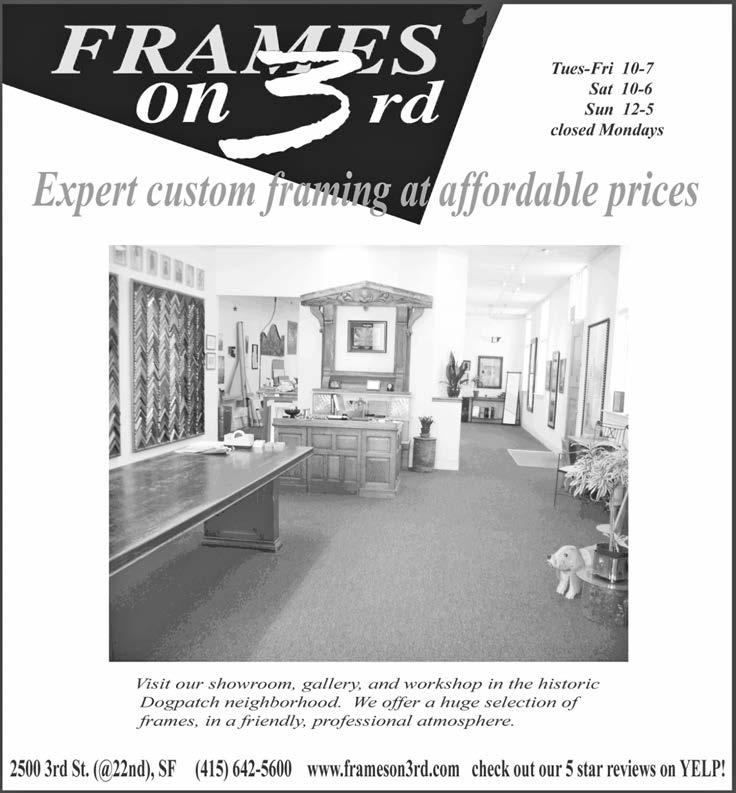
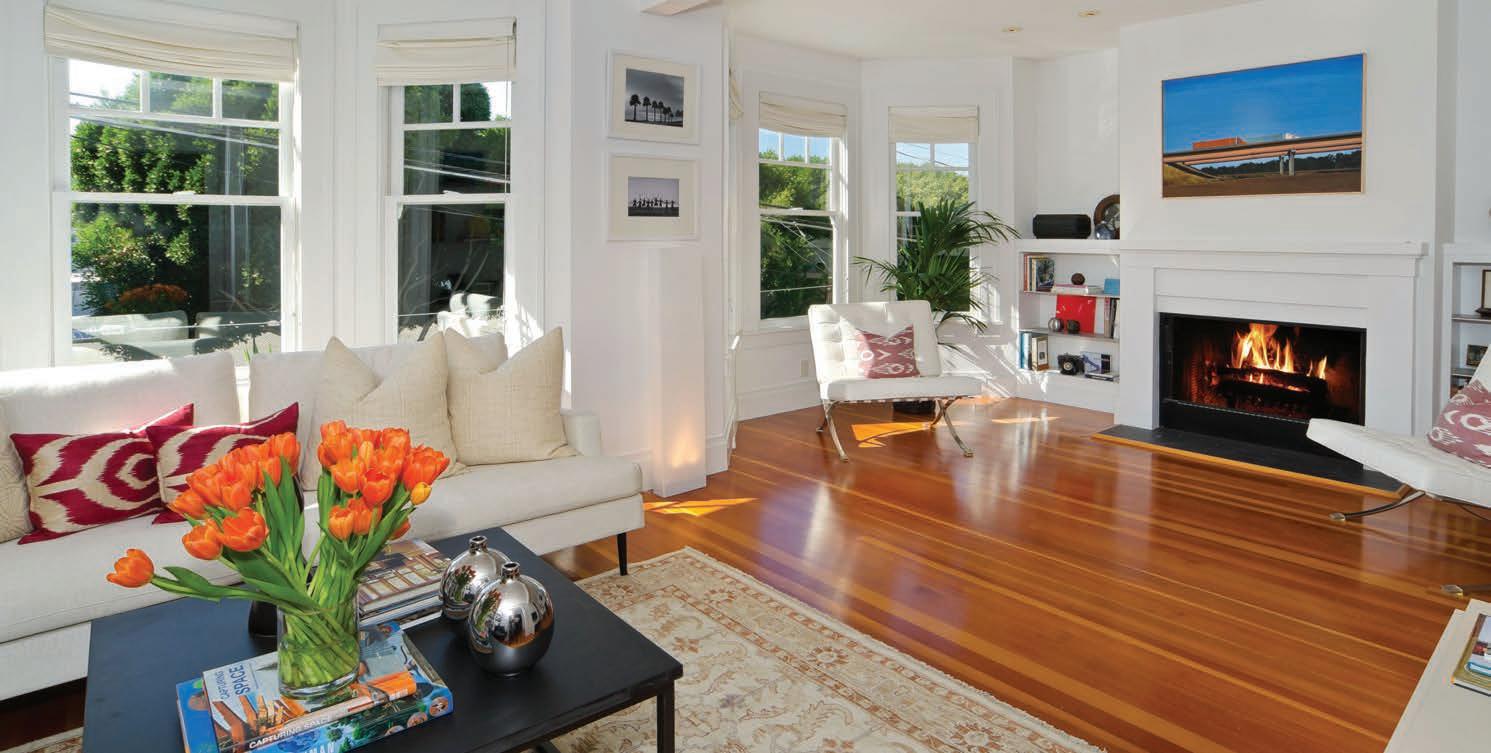
Low interest rates and powerful demand have continued to keep the Potrero Hill market strong. Many homes have attracted multiple offers after short periods on the market.
If you have been thinking of selling your home, now may be an excellent time to take advantage of strong demand from buyers.
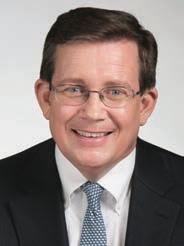
5 thur
Food: Butter Paddling Class
Make butter and learn about regenerative farming practices. Comes with three different minicompound butters, gift ribbons available; light appetizers, cheeses; two drinks, wine and beer; hands-on butter paddling lesson from Daily Driver’s head dairy maker; in-depth education about Daily Driver’s dairy, practices, and philosophy; and recipe cards. $110. 6:30 to 8:30 p.m. Daily Driver, 2535 Third Street. For more information and to sign up: https://bit. ly/34n4fvK
7 sat
Commerce: Dogpatch Holiday Sale
Stroll and shop sales at neighborhood merchants. With live music and local food on offer throughout Dogpatch, with the main hub of activity on Third Street, between 20th and 23rd streets. Plus, the Makers Market from 10 a.m. to 2:30 p.m. Magnolia Hall, 2525 Third Street. For more information: https:// bit.ly/2OEXRt4
8 sun
Art: 3 Door Gallery
Visit 3 Door Gallery, located in historic 1890 Bryant Street Studios, for a preholiday Open Studios. More than 20 resident artists, including painters, printmakers, photographers, jewelry
makers, potters and more will offer their wares. 12 to 5 p.m. Free. 1890 Bryant Street Studios, 1890 Bryan Street. For more information: https:// bit.ly/2QMVdnv
11 wed
History: Valencia Street as a Lesbian Corridor
Osento Bathhouse. Amelia’s. Artemis Cafe. Old Wives Tales. Modern Times Bookstore. The names and functions of these venues have changed, but they’re part of the living memory of Valencia Street. Long before the white tablecloth, boutique-filled, gentrified peculiarity of today, the Valencia Street corridor was a hotbed of radical feminism and lesbian culture. Lisa Ruth Elliott moderates a conversation with women who helped create the important sites and undergirded the intellectual and nightlife of the 1970s and 1980s. With Canyon Sam, Molly Martin, and Ruth Mahaney, Shaping San Francisco is a series of free lectures which aim to excavate the City’s lost history, a place to meet and talk unmediated by corporations, official spokespeople, religion, political parties, or dogma.
7:30 to 9:30 p.m. Free. Eric Quezada Center, 518 Valencia Street. For more information: https://bit.ly/2OJujuj
12 thur
Music: Ben Barnes
Ben and his friends play acoustic rock, Olde Time fiddle, classical pieces, jazz
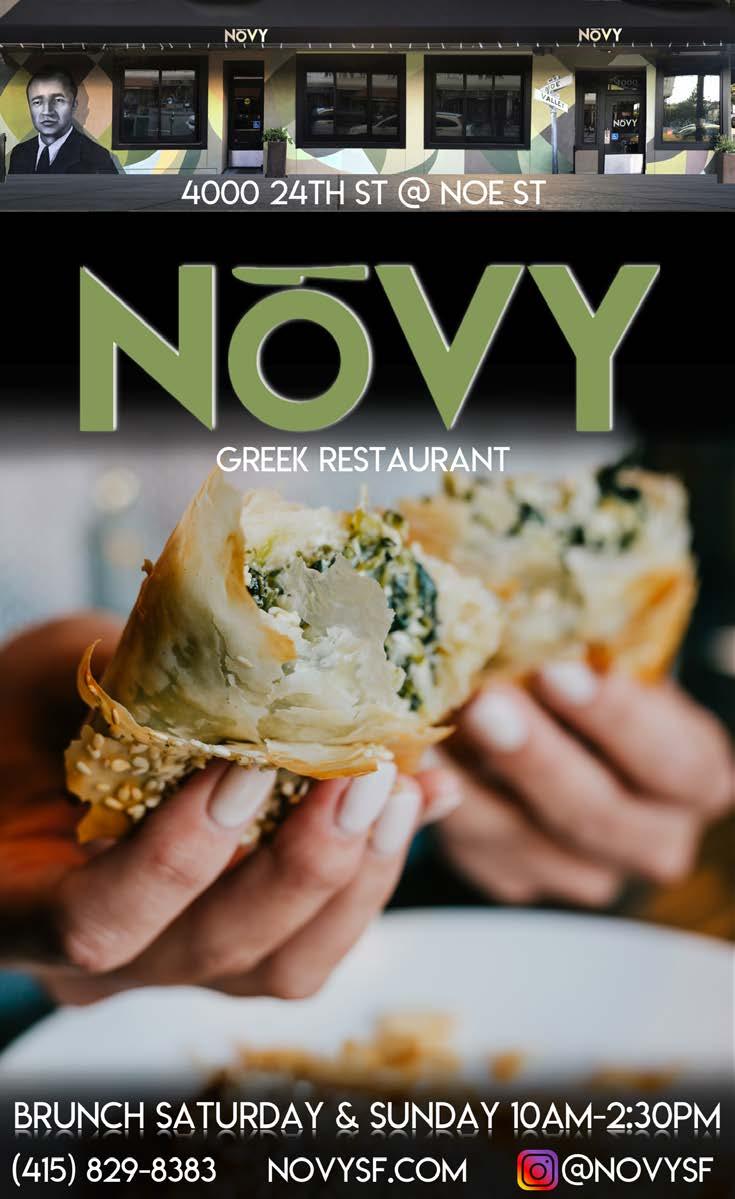
combinations; one show featured a saw. 7:30 to 8:30 p.m. Free. Farley’s, 1315 18th Street.
12/12 Thursday and 12/13 Friday
Art: Chocolate and Art Show San Francisco
Chocolate and Art will showcase local artists, vendors, and musicians complimented by dancing artisan chocolatiers. 8 p.m. to 2 a.m. $15 to $20. Ages 21 and over. SOMArts Cultural Center, 934 Brannan Street. For more information and to purchase tickets: https://bit.ly/2QM5D6Y
14 sat
Conservation: Restoring Laguna Honda’s Lost Trails
San Francisco Urban Riders and other volunteers will work with the Laguna Honda Hospital and Rehabilitation Center to improve historic multiuse trails that’ll become part of the larger San Francisco trail system that connects people to a wild, inviting and educational open space. 9 a.m. to 12 p.m. Free. Laguna Honda Hospital, 375 Laguna Honda Boulevard. For more information: https://bit.ly/2QK615Q
15 sun
Commerce: SFMade Holiday Fair
SFMade presents its ninth annual holiday bazaar, featuring locallymade items by more than 60 vendors, including jewelry, bags, chocolate, wine, home items, apparel, body products, children’s toys, holiday cards and decorations, and stationery, all made in San Francisco. 11 a.m. to 5 p.m. Free. California College of the Arts, 1111 Eighth Street. For more information: https://bit.ly/2KO8VD5
Food: All-You-Can-Eat Crab Feast All-you-can-eat Dungeness crab legs, garlic noodles, salad, and iced tea. Pair
a plate with draft beer or house made sangria. The crabs are caught off the Alaskan coast, cleaned, shipped frozen, cooked to coral-red perfection, and served cool in the shell. Slather them in house made creamy salsa brava or twirl a forkful of sweet crab meat into garlic noodles. 12 to 3 p.m. $25 to $70. SoMa StrEat Food Park, 428 11th Street. For more information and to purchase tickets: https://bit. ly/33gGd4b
17 tues
Food: The Stinky Cheese Club
At the monthly meeting of The Stinky Cheese Club, bring cheese, crackers, fruit, veggies – something impressive, not just the cheapest item available at Safeway – and get a free ice cold can of PBR or well drink. 5:30 to 8 p.m. Free. Ages 21 and over. Bender’s Bar & Grill, 806 South Van Ness. The Stinky Cheese Club meets every third Tuesday of the month. For more information: 415.824.1800.
18 wed
Music: Soul Delights
The Soul Delights are back with their collection of energetic rhythm and blues and other classic songs. Sing along and dance in your chair. 7:30 to 8:30 p.m. Free. Farley’s, 1315 18th Street.
19 thur
Music: James Everett James Everett, a San Francisco native with a sound and performance style that’s reminiscent of the Rat Pack days fused with sprinkles of rhythm and blues, jazz, pop and neo-soul. 7:30 to 8:30 p.m. Free. Farley’s, 1315 18th Street.





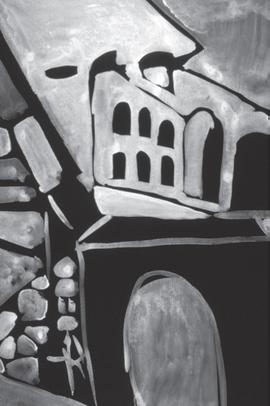




20 fri
Beverage: Spark Social SF
Forget long shopping lines, complicated overcooked meals, forced smiles, and political tensions and enjoy National Sangria Day! Featuring bottomless holidayinspired sangrias, DJ’d music, and a dozen food trucks sleighin’ gourmet eats. 5 to 9 p.m. $30. Ages 21 and over. SPARK Social SF, 601 Mission Bay Boulevard North. For more information and to purchase tickets: https://bit.ly/2pIjaBk
12/21 Saturday and 12/22 Sunday
Dance: Ice Skating
Beginner skaters can learn from professional skate instructors. Lessons, including skate rentals, are free to those who sign-up in advance. Limited to 50 participants per session, age three-plus. Check-in 8:15 a.m.; standbys admitted after 8:15 a.m.
Every Saturday and Sunday through January 19, 2020. Free with RSVP. Union Square Ice Rink. For more information and to reserve a space: https://bit.ly/35ugJBK
22 sun
Hanukkah: “Light of Menorah”
Festival
Celebrate the first night of Hanukkah by wearing your favorite light up, glittery and glowing clothes. Light candles, play dreidel, hula hoop, listen to live music, craft, play games, eat Harvey’s Donuts, make hygiene kits for people experiencing homelessness, to be distributed by Lava Mae. 3 to 6 p.m., with candle-lighting and songs at 4:30 p.m. Free; RSVP encouraged. Ghirardelli Square. For more information and to reserve a space: https://sforce.co/2rlkScx
Art: “Illuminate 2019”
The Illuminate San Francisco Festival of Light showcases 43 installations, permanent and temporary, by 32 artists, in 17 neighborhoods, shining light on the City’s ever-expanding light art scene. Free. For more information: https://bit.ly/2qxPUhk
12/24 Tuesday through 1/9/20 Thursday
Locomotives: Train Display at the Library
Celebrate the return of an annual tradition: the holiday model train. Kids of all ages can press buttons and watch trains zoom through a colorful holiday village. This custombuilt exhibit is a labor of love by the San Francisco Public Library’s Facilities and Engineering staff, who assemble and maintain it. Free. San Francisco Main Library, Children’s Center, 100 Larkin Street. Note the library is closed on December 25, 2019. For more information: https:// bit.ly/34iLkC1
Music: Rainbow Sundae
Rainbow Sundae plays a variety of music. 7:30 to 8:30 p.m. Free. Farley’s, 1315 18th Street.
Music: Frances Ancheta
Singer/songwriter Frances Ancheta performs acoustic music, eclectic indie folk/pop/rock, reflecting her diverse and multicultural heritage growing up in the San Francisco Bay Area. 7 to 8:30 p.m. Free. Farley’s, 1315 18th Street.

Please help us celebrate local journalism, our neighborhood, and you!
The first toast is on us, as well as small bites and plenty of good cheer.
Date: Wednesday, December 11, 2019
Time: 6 to 8 p.m.
Place: Yield Wine Bar, 2490 Third Street (between 20th and 22nd streets) We hope to see you!
All the best, The Potrero View
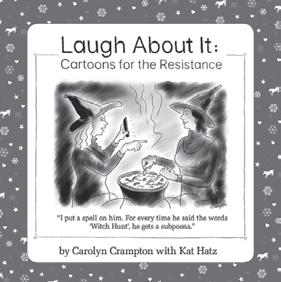

Whether you need a pick-me-up between shopping trips or a break from the holiday hubbub, we can help. Stop in for some holiday warmth and cheer.
Plus, you can join us in our annual food drive benefiting the SF-Marin Food Bank. All donations of five or more items receive a free coffee!

FLOWER MART from front page
portation corridor, along 16th Street, is being significantly modified to accommodate growing levels of commuter, transit, bicycle, and pedestrian traffic, including widening sidewalks at bus stops and installing boarding islands. The infusion of semi-industrial activities – with heavy-duty delivery trucks, and early morning goings-on – may not match well with emerging land uses.
Walden Development’s approved plans for the Corovan site features 146 two-bedroom, two-bath units; 22 three-bedroom, two-bath homes; and six ground level flex spaces that could be used as live-work. Forty-two of the units would be offered at below-market rents, 55 percent of average mean income. There’d be roughly 10,000 square feet of family and children’s outdoor play area; a $9.7 million payment to the Mayor’s Office of Housing to fund additional BMR residential construction; and a $1.8 million donation to Friends of Jackson Park, a neighborhood group dedicated to improving Jackson Park and Playground.
More comprehensive coverage of the Flower Mart’s fate, and potential use of the Corovan site, will appear in the View’s January issue
ENERGY from front page
United States, all three electricity IOUs have asked the CPUC to raise their rates by upwards of 36 percent over the next two years.
At the same time, IOUs are trying to reduce the risk of electricity-sparked wildfires by implementing Public Safety Power Shutoffs, which has

significantly degraded electric dependability. Higher rates and lower reliability are reinforcing existing energy inequities. Poorer communities and residents are less able to stay cool in the rising summer heat and pay for critical health, safety and community facilities and services. Ballooning electricity costs will ultimately muffle California’s economic growth, particularly in sectors, such as food processing, that require significant refrigeration.
The economic impacts of shutoffs are also significant. Last fall, a mid peak fire season and forecasts of wind gusts of up to 90 miles an hour, PG&E cut power multiple times to upwards of one million meters, totaling about three million people. The preventative measure — which forced businesses and schools to close, and municipalities to scramble to maintain essential infrastructure — may have cost the California economy in the range of $2.5 billion for each power shutoff, based on Lawrence Berkeley National Laboratory data. Preventing fires may justify forced power outages, at least until the grid is sufficiently modified to stand on its own, but they’re costly, disruptive and potentially deadly when they impact people’s access to emergency services.
These recurring and worsening events have illuminated the vulnerabilities of antiquated “spoke and wheels” energy monopolies, in which large California utilities control electricity conveyance through massive centralized power plants and multiplemiles-long transmission networks. This state-sponsored structure, which is steadily being hollowed-out by distributed generation (DG), such as photovoltaics, is misaligned with the
low-carbon, resilient, energy future Californians want and need, and no longer matches the underlying technology available to provide power.
Emerging as an alternative to monopolistic and inflexible IOUs are local governments (LG). Local governments, responsible for land use planning and building permitting, are well positioned to encourage the transition to all-electric buildings, speed adoption of resilient microgrids, and deploy necessary infrastructure to support the coming herds of electric vehicles. Over the past 20 years LGs have developed significant expertise and capacity to market and implement energy efficiency and distributed energy resources (DERs) – such as LEDs and storage – to vulnerable and complicated populations and are well positioned to help craft the next generation of energy savings and management assistance programs that focus on changes in our electricity consumption patterns.
As the electricity grid and energy supplies evolve from monopolies to a diversity of DERs and providers, functions that were once core to utilities’ operations and profitability are now being taken up by local governments and private sector third parties. These include government-led regional energy networks, which deliver energy efficiency services; and community choice aggregators (CCAs) which buy and sell retail energy and develop DG. Since the launch of Marin Clean Energy in 2010, 19 CCAs have formed throughout the state, with more on the way. The California Public Utility Commission estimates that as much as 85 percent of utility customers will receive power through CCAs, third
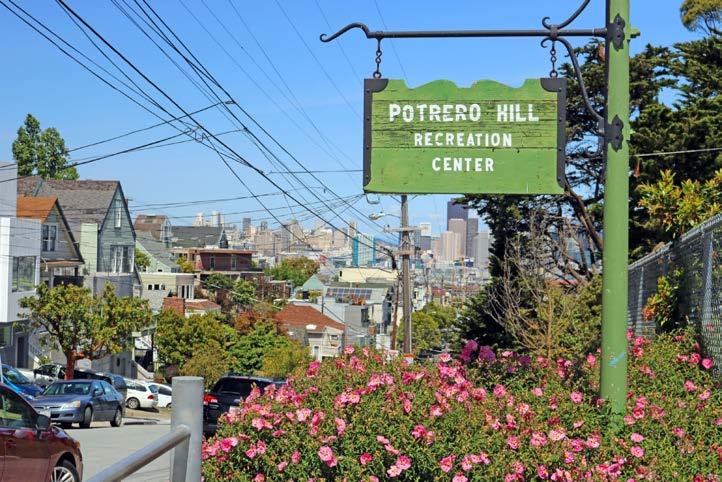
party providers, or DG rather than an IOU well before the end of the next decade. Distribution is increasingly important; large generating facilities and transmission lines less so.
LGs should continue to help usher in the new clean energy era by performing functions which IOUs are no longer best suited for or even want to do. For example, LGs are already accountable for park and open space maintenance and the care of street trees and are well-positioned to supplement or replace utility vegetation management. This is particularly true for forested jurisdictions, which are grappling with, and paying for, similar wildfire mitigation strategies as the IOUs are being asked to implement by state regulators.
A handful of LGs are considering joining the 46 publicly owned utilities in California. San Francisco wants to takeover PG&E’s distribution system in its jurisdiction. Valley Clean Energy Alliance offered the utility $300 million to acquire distribution infrastructure in Yolo County. The mayors of Oakland, Sacramento and more than a dozen other municipalities, led by San Jose, want to purchase PG&E and turn it into a giant customer-owned cooperative.
Bills tend to be lower for customers served by municipal utilities than by IOUs. For instance, a household using 500 kilowatt hours of electricity in the fall of 2015 would have paid $58 to Sacramento Municipal Utility District; $79 to Los Angeles Municipal Utility District; $93 to PG&E; $97 to SCE; and $116 to SDG&E.
Californians look to their local governments to help them weather
ENERGY continues next page

page
storms and earthquakes, fires and power outages, and to ensure fair access to needed services. LGs have demonstrated their ability to collaborate with one another, the IOUs, civic groups, and others to deliver outsized benefits to their communities. In the face of economic, equity, and environmental challenges, it’s time for local governments to replace regional monopolies as our primary purveyors of electricity.
SAN BRUNO AVE from page 3
caused by a large jump in the block’s population. Goode, for personal environmental reasons, has chosen to omit parking from the proposed project.
The amount of affordable housing is also likely to be debated. According to the PPA, 12 percent of affordable units will be at 55 percent of the area median income (AMI) and eight percent at 80 percent AMI, which meets City Planning Code requirements. The AMI for San Francisco is currently $96,000 a year. Several people at the meeting stated that many longtime Mission residents don’t make that kind of money.
CANNABIS from page 4
medical and recreational benefits of cannabis consumption. The dispensary will highlight small local products as well as its own specialty items. “It is our intention to work with our neighbors and create something that everyone can enjoy, appreciate, and be proud of.” Lay said. Stay Gold
will “host wellness workshops in the dispensary that will teach people how to cook with, safely dose, and explore the products in our store.”
Veterans of the food and beverage industry, Davis and Lay own Fig & Thistle, a wine bar, in Hayes Valley. They plan to offer a “diverse array of culinary items infused with cannabis, like honey and oils,” Lay said. “We want to celebrate other small cannabis businesses, products sourced from other equity producers, and other products by featuring them on our shelves. Customers will be able to browse all products freely and ask questions of our knowledgeable staff. Our staff will always be happy to assist anyone that comes in.”
eated by white pavement stripes has been added. Amblers stride between the eastbound bikeway, which hugs the curb along the Caltrain property, and a parallel parking lane situated between the eastbound travel lane and foot path, which replaced the back-in angled parking along the curb.
In all, 105 general metered parking spaces will be removed throughout the project area. Tour buses are using an unofficial loading zone on the south side of Townsend, west of Fifth Street. “It’s appropriate for those buses to load there,” Streeter noted.
Passengers wait to board on the pedestrian walkway. Docking at the new pedestrian island will improve transit efficiency by eliminating the need for buses to pull in and out of lanes. Placement of the 10-foot wide eastbound bikeway between the raised cement platform and the curb help with vehicle traffic protection. Bicyclists need to navigate a point near the Caltrain station where pedestrians briefly cross the bikeway.
Fourth to Fifth streets on the north side of Townsend will have no parking or loading to prevent conflicts with bicyclists travelling west. Parking is permitted west of Fifth Street, in a parking lane situated between the westbound travel lane and bikeway. The bike path will be located against the curb with barriers from parked cars consisting of flexible soft hit posts.
of Fourth Street once the project is complete. “It’s important for us to accommodate the taxis, for people with accessibility issues,” Streeter said.
Transportation Network Company (TNC) vehicles, also called ride-hail services, and other private use vehicles have been assigned an interim loading zone beginning at Lusk Street, midway between Third and Fourth, on the north side of Townsend. Lyft has designed a geo-fence that doesn’t allow passenger pickups outside this zone during construction. After project completion, private vehicle pickup and drop off will be allowed in designated spaces along the raised island west of Fourth Street.
TNCs pose a challenge to orderly vehicle movement in Caltrain’s vicinity. These vehicles are often seen “executing illegal maneuvers, turning by crossing double orange lines, picking up and dropping off in the wrong places,” Streeter said, adding that ride-hail drivers “are subject to the demands of their passengers.” The volume of bicycle and pedestrian traffic in front of Caltrain makes these driver behaviors especially dangerous.
TOWNSEND from page 6
These upgrades will “make it visually clear to drivers and people on bicycles where they’re supposed to be at all times,” Streeter said.
Stay Gold isn’t permitted for onsite consumption of cannabis products; Lay, Davis, and Hall are in the process of securing municipal approval to add an ingestion lounge in the back of the dispensary, which’ll feature “a state of the art ventilation system that constantly pumps fresh air in and filters the air going out, the community will not be negatively impacted by odor,” said Lay. “We want you to walk in and immediately feel relaxed. We are excited for all the new options for cannabis on a health and recreational level and look forward to getting to know everyone in the community and our patrons; we hope to grow together over the years.” TOWNSEND continues on page
“We struggle with ride-hail vehicles as an agency. We only have persuasive authority,” Streeter said of SFTMA’s lack of regulatory power over TNCs.
For the middle segment between the raised boarding islands ending at Fifth Street and beginning at Seventh Street, a pedestrian walkway delin-
Taxi loading, temporarily moved to Fourth Street in front of Caltrain, will resume along the island on Townsend extending from 30 to 150 feet west
The outbound 10, to Potrero Hill, and the 81X and 82X will load on the northeast corner of Townsend and Fourth. SFTMA will re-configure parking and loading from Third to Fourth streets once the project is complete.
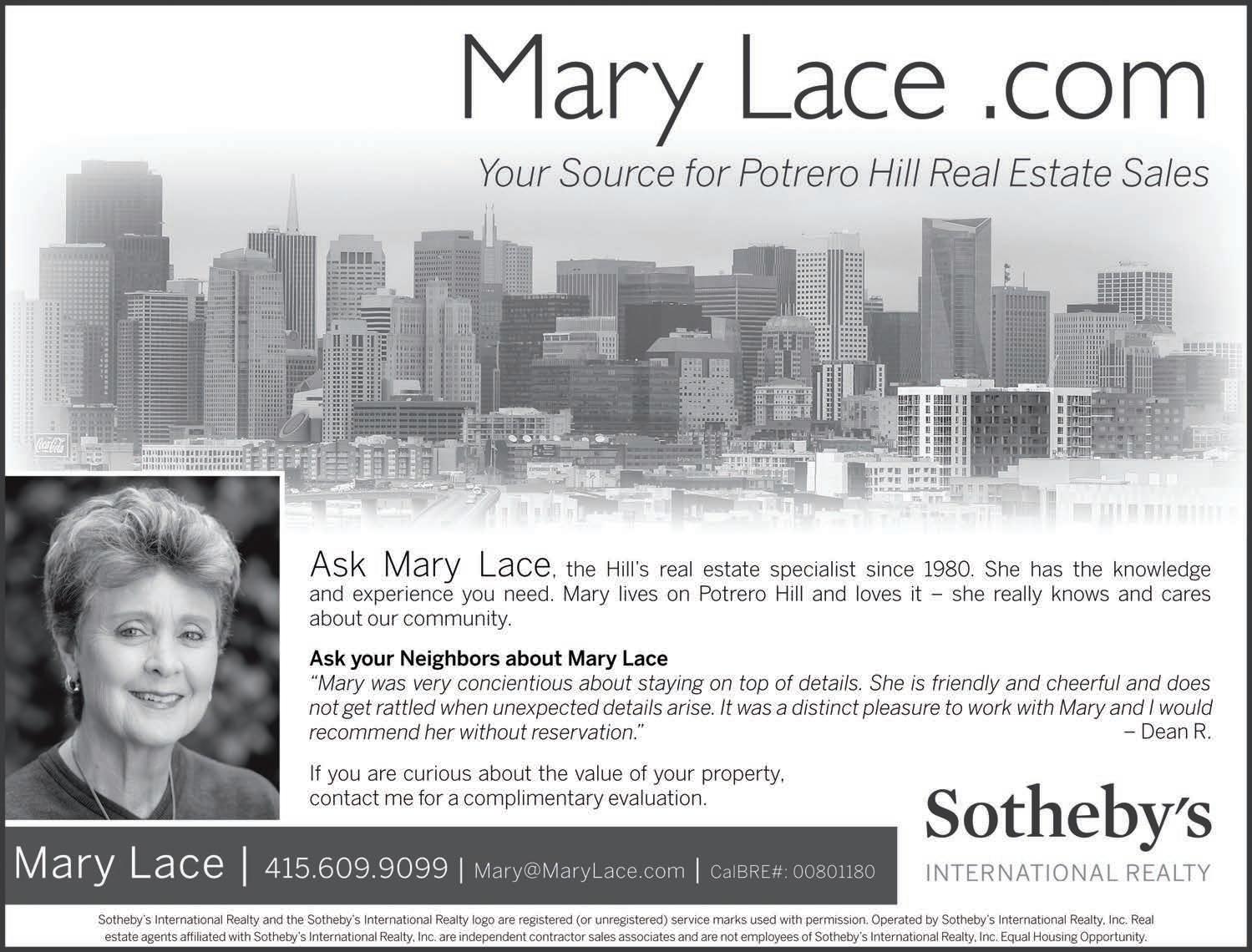
That’s the question that Ms. Zeynep’s eleventh grade students at San Francisco International High School sought to answer through poetry, as part of a project with 826 Valencia. 826 Valencia is a nonprofit organization dedicated to supporting under-resourced students ages six to eighteen with their creative and expository writing skills. 826 staff lead trained volunteer tutors to provide individualized attention in the classroom, working in partnership with San Francisco Unified School District teachers on writing projects. San Francisco International High School, in Potrero Hill, caters to recent immigrants and English Learners. Read on for insights from these young writers’ on their immigration experiences, and the America they were promised.


loaded Clipper card; arrive at the bus stop on time; know the best route. Often the rider will have to switch buses at an intermediary stop. Even at the final stop the rider may have to walk 15 minutes to their destination. This process means setting foot in all parts of the City, not just the desired areas. It means exiting a bubble and relating to the people around you.
While the City is growing public transit use is declining. San Francisco Municipal Transportation Agency and California Department of Finance statistics indicate that San Francisco’s population rose from 872,876 residents in 2016 to 887,540 in 2018, with another roughly 13,000 people likely added this year, Muni ridership has moved inversely. Whereas between 2016 and 2018 population rose by about 15,000 people, the number of people taking Muni declined by roughly 20,000. In 2016, the head count was 755,380 monthly passengers; by 2018 it’d dropped to 735,880.
Lyft, with its goal “to change our cities so that they are designed around people instead of cars,” entered the scene in 2012. It launched in San Francisco as a coordination service for ridesharing but became much more successful as a short-distance taxi company. Yet in the City Lyft’s presence works counter to its goal. According to a recent study by Science Advances Magazine , TNCs in San Francisco increase congestion. Instead
To me, America is as kind as my brother helping me do my homework when I forget to do it.
I left because I want to have a better life. I left because of a war that destroyed all the doors that belong to all the people who were poor. I left because my dad wanted me to come with my brothers so I can have a better place and stay away from others.
I came for a free and better education. I came to have a job that will make my future bright and beautiful like a star.
I came to learn English.
I was promised,
“The care of human life and happiness and not their destruction is the first and only object of good government.”
So I thought the government’s job was to take care of people.
So I thought the government’s job was to make sure people have their rights and their voices are heard.
So I thought the government’s job was to see what people need.
So in my America there is a free election.
So in my America there is affordable housing. So in my America there is healthcare.
America is what I imagined it to be. America makes me feel brave.
To me, America is as kind as my brother helping me do my homework when I forget to do it.
I Didn’t See the World like That!
BY LELY CHACONTo me, America is like fetching water from a deep well.
I left because my future was lost.
I left because the gangs invaded my education. I left because every day was harder than the one before.
I imagined the United States with many opportunities for me. I imagined that the United States would help me make my dreams real. I imagined that the United States would give me opportunities to live.
George Washington said, “If freedom of speech is taken away, then dumb and silent we may be led like sheep to slaughter.”
So I thought this meant that everybody needs to say what they think because if people don’t say their opinion people who have more power will take advantage of them.
But in my America people who have more power can express their ideas and other people will care about them. But in my America, if you are poor you cannot say what you think. Your words don’t matter to rich people. America is not what I imagined. Feels like stagnant water.
To me, America is like fetching water from a deep well.
of replacing private cars they bring masses of new vehicles into the City; about 70 percent of TNCs come into San Francisco from elsewhere.
The study found that driving speeds have decreased to below posted limits in many areas. In a neighborhood with a 25 miles per hour (mph) limit average speeds are 23 mph, where in past years speeds in the same area were well into the 30s. While a lower pace is good for road safety, the increasingly sluggish traffic pace suggests that motorists are unable to travel as fast as they want because there are so many cars on the road.
Traffic slowdowns are also triggered when drivers are distracted or make unpredictable maneuvers. Lyft and Uber drivers seem to look at their phone GPS almost as much as they gaze at the roads and make unexpected stops to let their passengers out. They don’t possess the training and City knowledge that taxicab drivers have. And, unlike cab drivers, who are chauffeurs by trade, TNCs have a high turnover rate.
It’s easy to ignore the world around us when all we do is plug an address into an app, roll up the window to the smells and sounds outside, and silently stare into a phone until the driver stops at our destination. Direct experience of the spaces around us is no longer necessary to live in a place. This way of getting around deprives us of the random interactions, litter, street art, and textures that used to make San Francisco special.
Vision ZeroSF, the City’s plan to eliminate traffic-related deaths by 2024, has regressed after reaching a low of 20 fatalities in 2017, when 14 people were killed while walking on San Francisco’s streets. Numbers climbed to 23 victims in 2018; 15 were pedestrians.
Last month, Jesus Ocampo, 77, succumbed to injuries he incurred when he attempted to cross 16th Street at De Haro. Days later, an unidentified woman was killed in a hit and run
involving an sports utility vehicle on the 5000 block of Mission Street, bringing total 2019 road mortalities to 27, 17 of which involved pedestrians. The losses included six people killed while driving, two motor vehicle passengers, and one each who were slain while on a motorcycle or bicycle.
Also in November, another pedestrian, struck on the 4000 block of Mission Street, and a bicyclist, hit at Fulton and Webster streets, sustained life-threatening injuries.
See Far Housing is developing an affordable residential complex in Rwanda, with plans for up to 600 two-, three-, and four-bedroom units. Support is needed for community amenities, including playgrounds, playing fields, gardens, and the like.
All profits from home sales will be directed to Agahozo-Shalom Youth Village, which cares for more than 500 vulnerable youth. Cash or in-kind donations, including pro bono landscape and environmental services, playground and maker’s lab equipment, would be greatly appreciated.


Tax deductible checks made out to “SF Community Power” can be sent to 296 Liberty Street, San Francisco, California. For more information: 415.643.9578; steven@moss.net.
To me, America is like stairs with different colors.
Different people have different levels.
I left because I want to get a better education.
So I can celebrate my graduation.
I left because in Yemen there is no school open.
All schools in Yemen closed because they are broken.
I left because I want to be able to afford important things.
Like food, clothes, and water.
I imagined that the USA is very clean.
And it has big buildings.
I imagined that education in the USA is so RIGOROUS.
But also I imagined that people in the USA hate all Muslim people.
I was promised that, “All men are created equal.
They are endowed by their creator with certain unalienable rights.
That among these are life liberty and the pursuit of happiness.”
So I thought everyone has the same right.
That people deserve happiness in their life.
But in my America, rich people are the ones who have all the power.
The poor people are not treated equal and are not feeling happy.
America is not what I imagined.
Feels like the rich people taking the country.
To me, America is like stairs with different colors.
Different people have different levels.
To me, America is like a cold night in the winter at a dark mountain.
I left because I want a better life for my future.
I left because I want to be with my family.
I left because I want to support my mother as she has done with me.
I imagined the U.S. so clean, where you weren’t going to find trash in the street.
I imagined that the money was made easy, that you don’t need to work so much.
I imagined I wasn’t going to see a lot of immigrants, working hard.
Hamilton said, “I am not throwing away my shot
Hey yo, I’m just like my country
I’m young, scrappy, and hungry
And I’m not throwing away my shot.”
So I thought people of America will never give up and keep going.
In my America you need to work hard to get money.
In my America you have to go through challenges as though you want to.
In my America you have to study to get a good job.
In my America you have to keep going if you want to achieve your goal.
America is not what I imagined, it feels depressing, frustrated, and disappointed.
To me, America is like a cold night in the winter at a dark mountain.
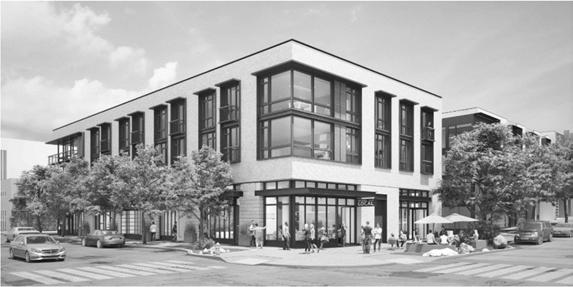
To me, America is like a key to unlock the door to your future.
I left because my father was arrested, and I stopped going to school. I left because I wanted to work hard to support my mother.
I left because the government doesn’t provide opportunity to the poor people.

I imagined myself working without sleeping, to have the opportunity to continue with my studies.
I imagined myself helping other people. I imagined the USA was dangerous because for me coming to a different place, it was going to be unfamiliar.
I was promised, “The care of human life and happiness, and not their destruction, is the first and only object of good government.”
So I thought leaders also cared about human rights, to hear people’s opinions, ideas of their happiness, overall how to build a perfect, joyful, and peaceful government that includes the community’s voices.
So my America is having the opportunity to get an education, health care, legal papers.
So my America is the inspiration to have the job that you always dreamed to have in your childhood.
So my America is working hard to achieve your goals and make them come true.
America feels like hope, having the passion to become successful.
To me, America is like a key to unlock the door to your future.


Income




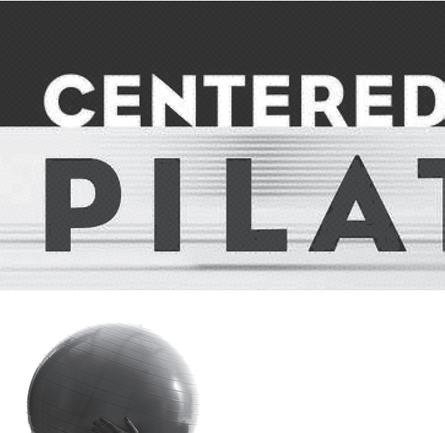




The View now accepts legal notices. Please contact: production@potreroview.net; 415.643.9578.
Freelance Writers Wanted
Modest pay, interesting assignments. Contact: editor@potreroview.net
Muir Beach Vacation Studio
Walking distance to the beach, with the crashing waves visible and audible from the place. Includes kitchenette and lovely patio. $195 a night, plus cleaning fee, two-day minimum. Editor@potreroview.net; 415.643.9578.
Walking distance to the beach, with the crashing waves visible and audible from the place. Three bedrooms, two baths, with a lovely deck. $275 a night, plus cleaning fee. Editor@potreroview. net; 415.643.9578.
View editor available to work with writers at all levels. Groups also available. $50/hour. Editor@ potreroview.net; 415.643.9578.
Got something you need to sell? Have a service you provide? Our Classified Ad section is just the place for you! Cost: Each classified ad is $25 for up to 200 characters, including spaces. A 20-percent discount will be provided for ads paid for six months in advance. Payment, and/ or corrections, must be received by the 18th of each month for the ad to appear in the following month’s issue. Please email all classified ads to office@potreroview.net
• SUPPORT LOCAL JOURNALISM • Advertise
www.potreroview.net/advertise/ 415.643.9578; productionr@potreroview.net advertising@potreroview.net
Let your neighbors know what you have to offer!
PREPAY: 2” x 2” 2” x 4”
6 months $345. $690.
12 months $555. $1,110.
Please contact: 415.643.9578
marketing @ potreroview.net
production @ potreroview.net
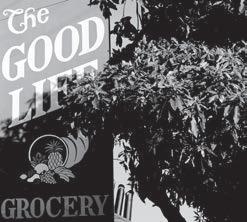
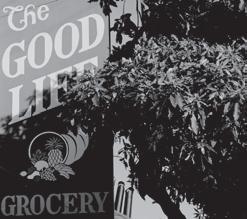
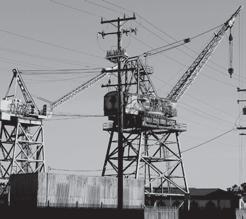
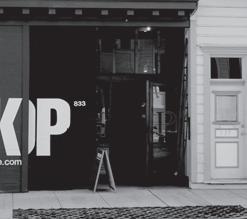

December 2019
The SFMTA isconducting a survey to better understand perceptions of sharing rides in San Francisco. To connect San Franciscans safely, equitably, and sustainably to their communities, we must make more efficient use of our street infrastructure. Increasing vehicle occupancy through shared rides, either in carpools or shared ride-matching apps, is one way to more efficiently utilize our existing street space. We are trying to identify priorities for San Francisco residents and the barriers they face when considering using shared ride options through this survey.
Take the survey atsfmta.com/projects/shared-rides-pilot
Child support matters can be complicated, stressful, and confusing. The Department of Child Support Services helps parents understand the process so they know their rights and options for making and receiving support payments. Call us today at (866) 901-3212 or visit our office at 617 Mission Street to learn how we can help you. Information is also available online at www.sfgov.org/dcss.
Would you like the opportunity to bring positive change to your community? Would you like to help make the City and County of San Francisco a safer place for all? Here is your chance to join the men and women of the San Francisco Sheriff’s Department. We are currently accepting applications for the position of Deputy Sheriff. The salary range for this entry level position is $74,152 to $94,666 per year with full benefits. Choose to make a difference today! Apply online today at: https://bit.ly/sfdeputy
SAN FRANCISCO SHERIFF’S DEPARTMENT | 1 Dr. Carlton B. Goodlett Place, Room #456 San Francisco, CA 94102 | Phone: 1 (877) SFSD-JOB | Website: www.sfsheriff.com
Let Your Career Take Off at SFO
Discover Why SFO is a Great Place to Learn, Earn, Grow and Thrive
With jobs in all parts of the airport, from cargo and security, to airlines and concessions, companies at SFO are always hiring! Visit flysfo.com/careers or call 650.821.5242 to learn about job openings and the benefits of working at the Bay Area’s largest airport.
Sunshine Ordinance Task Force
The Task Force advises the Board of Supervisors and provides information to other City departments on appropriate ways in which to implement the Sunshine Ordinance (Chapter 67 of the Administrative Code); to ensure that deliberations of commissions, boards, councils and other agencies of the City and County are conducted before the people and that City operations are open to the people’s review.
Upcoming term expirations or vacancies:
Vacant Seat 1, succeeding Matthew Cate, resigned, must be nominated by the local chapter of the Society of Professional Journalists and be an attorney, for the unexpired portion of a two-year term ending April 27, 2020.
Vacant Seat 8, succeeding Frank Cannata, resigned, must have demonstrated interest in, or have experience in, the issues of citizen access and participation in local government, for the unexpired portion of a two-year term ending April 27, 2020.
Seat 11, succeeding Fiona Hinze, term expiring April 27, 2019, must have demonstrated interest in, or have experience in, the issues of citizen access and participation in local government, for a two-year term ending April 27, 2021.
The City and County of San Francisco encourage public outreach. Articles are translated into several languages to provide better public access. The newspaper makes every effort to translate the articles of general interest correctly. No liability is assumed by the City and County of San Francisco or the newspapers for errors and omissions.
